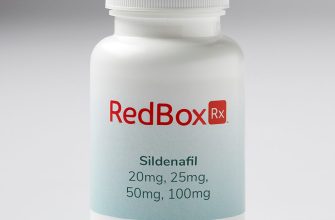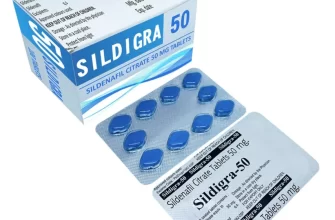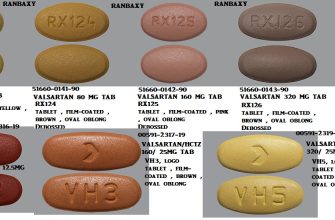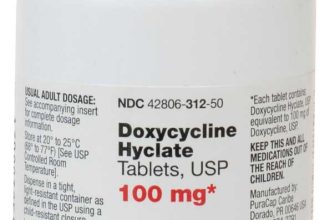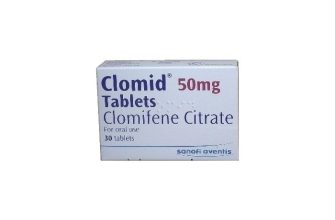Consult your veterinarian before starting prednisone for your dog. This medication can provide significant relief for conditions like allergies, arthritis, and autoimmune diseases when used correctly.
Prednisone acts as a corticosteroid, mimicking the effects of hormones produced by the adrenal glands. It effectively reduces inflammation and suppresses the immune system, making it a go-to option for managing various health issues in dogs.
Always follow your vet’s dosing instructions. Starting with a high dose may be necessary to control acute symptoms, followed by a gradual tapering down to find the lowest effective dose. Monitoring your dog for side effects such as increased thirst, urination, or changes in appetite will help you manage its usage safely.
Long-term use can lead to more serious side effects, including potential liver damage and weakened bones. Regular veterinary check-ups are essential to assess your dog’s response and adjust the treatment plan accordingly.
- Understanding Prednisone in Dogs
- Dosage and Administration
- Side Effects and Monitoring
- Uses of Prednisone for Common Canine Conditions
- Allergies and Inflammation
- Autoimmune Diseases
- Dosage Guidelines and Administration of Prednisone
- Potential Side Effects of Prednisone in Dogs
- Behavioral Changes
- Physical Reactions
- Best Practices for Monitoring Dogs on Prednisone
Understanding Prednisone in Dogs
Prednisone serves as a key medication in treating various conditions in dogs, including allergies, inflammation, and autoimmune diseases. Prompt administration as prescribed helps manage symptoms effectively.
Dosage and Administration
Dosage varies significantly based on the dog’s weight, condition, and response to treatment. Always follow the veterinarian’s instructions for the correct dosage. Here are general guidelines:
- Smaller dogs (under 20 lbs): Typically require 2.5 mg to 5 mg daily.
- Medium dogs (20 to 50 lbs): Usually prescribed 5 mg to 10 mg daily.
- Larger dogs (over 50 lbs): May need 10 mg to 20 mg daily.
Administer with food to minimize gastrointestinal upset. Keep water readily available as increased thirst can occur.
Side Effects and Monitoring
Be aware of potential side effects, including:
- Increased thirst and urination
- Increased appetite
- Weight gain
- Possible behavioral changes
Monitor your dog closely. Consult your veterinarian if you notice severe reactions such as vomiting, diarrhea, or signs of infection. Regular check-ups can help adjust the dosage and prevent complications.
Gradual tapering is essential if discontinuing treatment to avoid withdrawal symptoms. Don’t stop the medication abruptly without veterinary guidance.
By understanding the role of prednisone, responsible administration, and side effects, you can contribute to your dog’s health and well-being during treatment.
Uses of Prednisone for Common Canine Conditions
Prednisone treats various conditions in dogs, providing relief and managing symptoms effectively. Vets often prescribe this medication for inflammatory and autoimmune issues.
Allergies and Inflammation
For dogs suffering from allergies, prednisone reduces inflammation and itching. It effectively manages conditions such as skin allergies, environmental allergies, and food allergies. Administering prednisone can alleviate discomfort and improve the quality of life for your pet.
Autoimmune Diseases
In cases of autoimmune diseases, prednisone helps by suppressing the immune system’s overactive response. Conditions like autoimmune hemolytic anemia and lupus benefit from this treatment. Monitoring your dog for side effects is essential during administration, as long-term use can lead to complications.
Always consult your veterinarian before starting prednisone, as they will guide you on the proper dosage and duration specific to your dog’s needs.
Dosage Guidelines and Administration of Prednisone
Administer prednisone at a dosage tailored to the individual dog’s needs, typically ranging from 0.1 to 2.0 mg per kilogram of body weight. For acute conditions, a higher initial dose may be recommended, with the potential to adjust based on the response and side effects observed.
For chronic conditions, a starting dose of approximately 0.5 to 1 mg/kg daily is common. Gradually taper the dosage after achieving the desired response to minimize withdrawal effects. Avoid abrupt discontinuation without guidance from your veterinarian.
Divide the total daily dose into two to four smaller doses throughout the day to enhance absorption and minimize gastrointestinal upset. Administer with food to further reduce digestive irritation.
Monitor your dog for any adverse reactions during treatment. Side effects may include increased thirst, urination, and appetite, along with possible behavioral changes. Schedule regular follow-ups with your veterinarian for ongoing assessment and adjustments.
Avoid using prednisone during infections or if your dog has certain underlying conditions unless directed by your veterinarian. Each case requires a careful evaluation to determine the most appropriate protocol for administration.
Potential Side Effects of Prednisone in Dogs
Monitor your dog closely for possible side effects when administering prednisone. Common reactions include increased thirst and urination, which often lead to more frequent bathroom breaks. Appetite changes frequently occur; some dogs may eat more, while others might show reduced interest in food.
Behavioral Changes
Watch for alterations in behavior, such as increased aggression or anxiety. Some dogs may become restless or overly energetic, while others might appear lethargic or withdrawn. These changes usually vary from one dog to another.
Physical Reactions
Keep an eye out for gastrointestinal issues, including vomiting or diarrhea. Long-term use of prednisone can lead to more severe problems like ulcers. Additionally, monitor for signs of skin issues, such as thinning hair or infections. Regular veterinary check-ups help address these potential side effects before they escalate.
Best Practices for Monitoring Dogs on Prednisone
Regularly schedule vet check-ups to assess your dog’s response to prednisone. Doctors can adjust the dosage based on your pet’s symptoms and side effects.
Keep a detailed diary of your dog’s behavior, appetite, and weight during treatment. Record any changes in drinking habits or energy levels. This information will help your veterinarian make informed decisions.
Monitor for common side effects, such as increased thirst, urination, and appetite. If you notice any drastic changes or new symptoms, contact your vet immediately.
Be vigilant about your dog’s skin and coat condition. Prednisone can cause thinning of the skin or increased risk of infections. Regular grooming can help you spot issues early.
Stay consistent with medication administration. Give prednisone exactly as prescribed. Skipping doses or sudden discontinuation can lead to serious complications.
Offer a balanced diet. Prednisone can affect hunger levels and lead to weight gain. Consult your vet for dietary adjustments that can help manage your dog’s weight safely.
Provide plenty of water to combat increased thirst, and make sure your dog has easy access to fresh water at all times. Hydration is key while on prednisone.
Plan for possible mood changes. Monitor your dog’s behavior for signs of increased aggression or anxiety, which can be side effects of the medication.
Consider keeping your dog’s environment calm and stress-free. Reducing stress can help minimize the impact of prednisone on your dog’s overall well-being.
Finally, involve your dog in light activities to maintain their physical health. Short walks or gentle play can prevent muscle loss and support mental health.


